Mat training is one of the first dog training skills I teach new puppies and their parents.
It’s a versatile foundation skill that can be used to promote calmness and to teach your pooch what to do as an alternative to jumping, barking, bowling over house guests, counter-surfing, or any other undesired activity your dog might decide to engage in.
Having your dog go to her mat, and stay there, is a life skill every dog should learn!
Read on and we’ll explain everything you need to know to get started mat training your own pupper!
Mat Training: The Basics of Teaching Your Dog The Place Command
- Mat training allows you to teach your dog a “place” command, which trains your dog to go wait on her mat when you cue her to do so or anytime a predetermined event (such as someone knocking on the door) occurs.
- All you need is a comfortable mat (such as a bath mat), some treats, and your pooch! A clicker is optional, but helpful.
- Mat training can help eliminate a variety of problematic behaviors and challenges, ranging from improper guest etiquette to separation anxiety.
What Is Dog Mat Training? What is a “Place” Command?
The goal of mat training is to teach your dog to go to her mat on cue.
She should then settle on her mat for any length of time, no matter what distractions are happening around her, until she hears the release word.
This is also referred to as teaching your dog a place cue, as many people choose to use “place” as the command or cue word that asks your dog to go to her mat.
Of course, this takes time and requires you to complete several steps before achieving the end goal. But you may be surprised how quickly your dog learns to stay calmly on her mat once she figures out how fun and rewarding it can be.
Mat training can also be used as an alternative appropriate behavior.
This means, instead of jumping up on the counter to grab your late-night snack or instead of door dashing when a house guest arrives, you can teach her to go to her mat instead.
Doorbell rings?
Go to your mat.
Snack time?
Go to your mat.
Strange dog walking around outside?
You guessed it: Go to your mat.
Mat training can also teach your pup to be calm. Dogs who are anxious or have high energy levels can actually be taught how to relax with mat training!
Sound good? Let’s get you started!
And if you prefer learning via videos, we have a video on how to teach your dog the place command through mat training below! The process we show in the video is slightly different than what’s detailed below, but functionally the methods are very similar.
What Kind of Training Mat Do You Need?
The first thing you will need to do is buy your dog a mat.
Personally, I like to use a bath mat with a slip-free bottom (something like this mat would work well). Slip-proof bottoms are useful if you have hardwood floors and you don’t want to be constantly adjusting the mat during your training session.
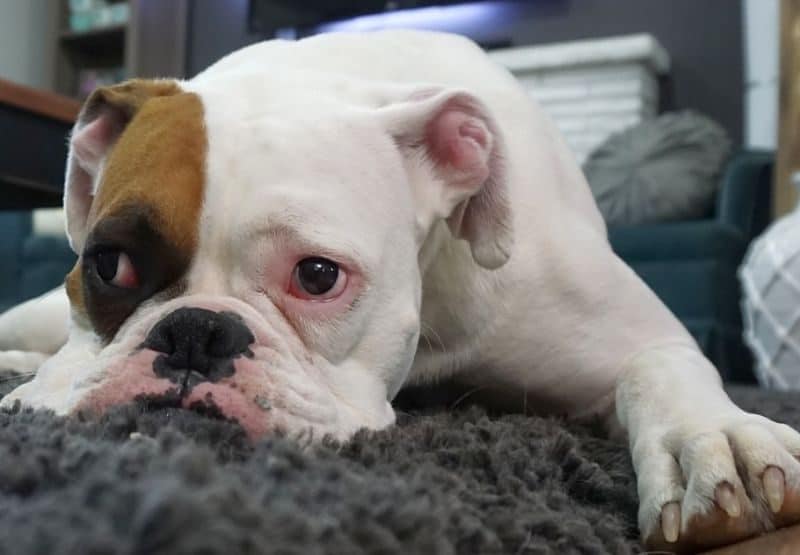
A bath mat is handy to use for mat training if you want to be able to easily bring the mat with you to a friend’s house or on a camping trip. It hardly takes up any room and it’s easy to launder.
But, we don’t recommend using her dog bed.
Why? It’s best to keep the mat and the dog bed as separate entities.
Her dog bed is a free choice sanctuary whereas the mat is associated with a specific behavior. This is an important distinction for the training stage.
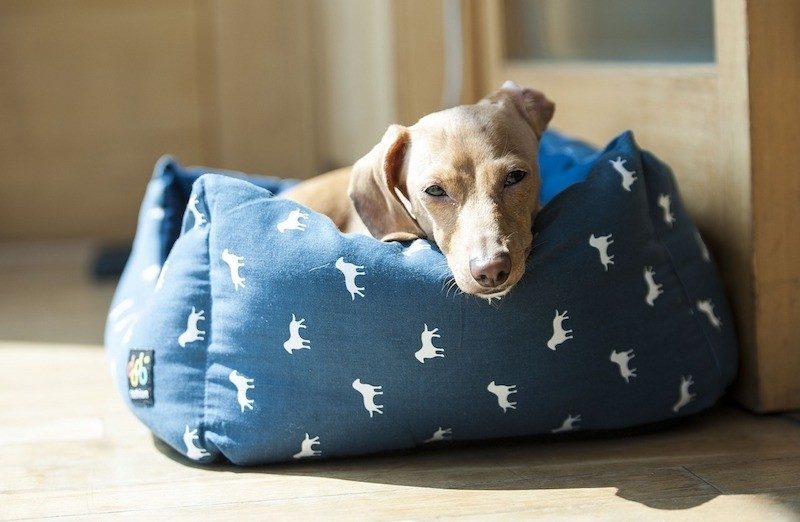
When the dog bed is down all the time, it loses its value. Your dog’s bed is always there when your dog wants it, but it doesn’t have a particular behavior associated with it.
However, when the training mat is down, your dog knows she’s expected to perform a certain behavior (chill out on it and relax)!
PRO TIP: I advise picking the mat up between each training session. If it’s down all the time and she decides to go on it and isn’t receiving a reward, the value of going on the mat plummets. Keep this mat solely for training this behavior and nothing else!
How to Teach Your Dog to Relax on a Mat With a “Place” Cue
Mat training is essentially a three-step process, which we’ll outline below.
1. Teaching Her to Go To Her Mat
First of all, we need to teach your dog to go onto the mat itself.
But before you get started, make sure you have everything ready to go before you put the mat on the ground. This means you want your treats ready and clicker in hand (if you are using one).
Lure Your Pup to the Mat
Put the mat on the floor and lure your pup onto the mat with a treat. She may choose to go onto it without a lure, and that’s totally fine!
Once she has all four paws on the mat, click your clicker or mark the behavior with your marker word (“Yes!”) and give her a treat. You do not need to use a clicker or a marker for this if you are uncomfortable or unfamiliar with clicker training, but they can be helpful.
The clicker or marker is used at the exact time she places all four paws onto the mat. This lets her know that her reward is coming.
At this point, all that matters is that she has four paws on the mat. It doesn’t matter if she is standing, sitting, or laying down. The behavior is “go to your mat.”
The main thing you want your dog to learn right now is that placing her paws on her mat equals treats!
You’ll soon find that she will readily hop on the mat all on her own to earn the reward.
Add a Release Cue
Once your dog understands that going to the mat = tasty treats, the next step is establishing to your dog when she can get off the mat.
After all, we don’t want her standing on there forever!
At this point, we want to add a release cue.
This is what signals that your pup is free to leave the mat, and it will become useful when we begin to lengthen the time she’s required to remain on the mat.
But in order to add a release word, we have to change our procedure a little bit.
Now, once she has all four paws on the mat, mark the behavior as per usual. But don’t give her a treat yet.
Instead, toss the treat away from the mat so she has to get off of the mat to retrieve it. As you toss the treat, give a release word, such as “all done!” or “free!”
Wait for her to return to the mat, and then repeat the process. Mark the behavior once she has all four paws on the mat, and then toss the treat a few feet away while using your release word.
Tossing the treat also allows you to practice rewarding her for walking back onto her mat several times in a row. This will help to teach her what she is expected to do: Go to her mat!.
Once she is reliability returning to the mat automatically without the use of a lure (at the very least 8 out of 10 tries), you’re ready for step two.
Check out this video that demonstrates how to teach your dog a release cue:
2. Incorporate the Cue Word
Now it’s time to start pairing the cue word with the behavior of going to her mat.
As your pooch walks onto the mat, say “place.” Once she is fully on the mat, mark the behavior and then reward her.
Be careful not to say “place” too early at this stage. Remember, you’re not asking for the behavior right now; this is not a command.
You’re simply trying to get your pup to associate the cue word “place” with the behavior of placing herself on the mat.
The “place” cue word should come as the dog’s paws are walking onto the mat so that your dog learns to pair what she is doing with the cue word.
After each correct attempt, mark your pups correct behavior while she is still standing on the mat, and then give her the release cue (“all done!”). Next, toss your treat a few feet away, rather than feeding it to her on the mat.
At this point we are rewarding the completed behavior.
So, when she hears the release word (“all done!”), it signifies the end of that round, and you can begin again. Repeat this step several times to ingrain the connection between the cue word, the mat, and the release word.
Once you have paired the cue word and the behavior of walking onto the mat for several trials, she should understand that they go together.
Cue the Behavior
Now you are ready to ask for or “cue” the behavior.
This means that instead of saying the word “place” as she steps onto the mat, you’ll use the word “place” as a command, asking her to perform the desired behavior of stepping onto the mat.
She has learned the word “place” is code for “go hang out on your mat.” Before she walks onto the mat, ask her to “place.”
Reward her for completing the place behavior with the cue word!
3. Distance, Distraction, Duration
Once your dog masters the basics and you are able to successfully cue her to go to her mat, it’s time to start adding in the “3 Ds” to your dog’s place training:
- distance
- distraction
- duration
In other words, we want to increase the distance between you and the mat, add distractions to the process, and increase the duration of time she’s expected to remain on the mat.
Increasing the Distance
To work on distance, you’ll start asking for your place cue and releasing your dog from a few feet away from the mat. Then, you’ll work on slowly increasing that distance, stepping increasingly further from the mat.
Some dog owners even get to the point where they can ask their dog for a place behavior from the other side of the house, or even the other side of a park!
But, you don’t necessarily have to get to that point. Being able to get your dog to go her place while you stand on the other side of the room is a fantastic goal (just be ready for it to take a lot of repetition and practice. Rome wasn’t build in a day!)
Time to Introduce Distractions
At this stage you’ll need to proof the behavior (teaching your dog to perform the behavior in the presence of distractions and in new environments). It’s useful if your dog can do this behavior at home in your living room, but it’s way more useful if she can do it anytime, anywhere!
Imagine if you could bring your doggo with you to the café and have her lie quietly on her mat while you chat with friends! There are so many benefits to this new skill!
So, you’ll want to introduce distractions such as:
- Clapping your hands while your dog is on the mat
- Having someone roll her ball across the floor while she’s on the mat
- Having a friend walk through the room.
You could even take the mat out onto the back porch and practice there — outdoor environments tend to be a lot tougher for dogs, and you’ll probably notice your dog struggle a lot more in these more stimulating environments.
Just keep on practicing and — since practicing in new and increasingly distracting environments can be challenging — make sure you are using high value treats!
Increasing the Duration
You’ll also want to work on increasing the duration of time that you ask your dog to stay on the mat for before giving the release cue.
A good place to start with this is Karen Overall’s Relaxation Training. The goal is to be able to have your pup stay put while the world passes her by. This is challenging and is pretty tough for dogs to master, so go slow and take baby steps.
It incorporates duration, distraction, and distance, all together!
This might look like:
- 3-5 seconds — release and reward
- 10 seconds — release and reward
- 20 seconds and step a few paces away — release and reward
- 30 seconds (treat every 5 seconds) and kneel down — release and reward
- 10 seconds and place a toy on the ground — release and reward
Just remember to move at your dog’s own pace. Try to set her up to be successful at every step. The more she gets it wrong, the more likely she is to get frustrated, so keep it simple!
You can give her treats while she is practicing this duration, but she isn’t allowed to get up until she hears her release cue, “All done!”
However, as you make her wait longer and longer, the treat serves as a nice reminder that she is doing a good job!
By now she should be well versed in the release word “All done!”
Use this to cue her up off her mat at the end of each round. Essentially, you are teaching her to stay put no matter what is happening around her until she hears “All done!”
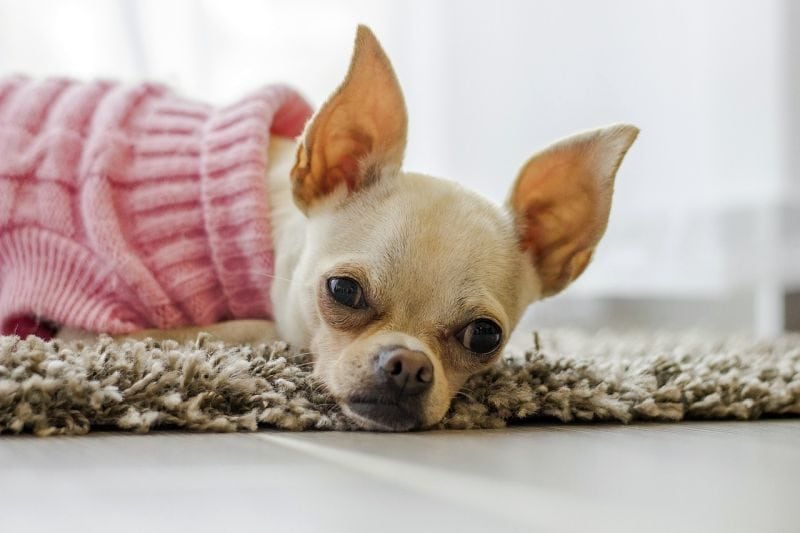
The Benefits of Mat Training and a “Place” Cue
Teaching your dog what you would prefer her to do in certain situations is not the only benefit of teaching your dog the place command and mat training, although it is at the top of the list.
Here are some excellent benefits to teaching this behavior to your dog:
Teaching Your Dog a “Place” Cue Can Help Prevent Undesirable Behaviors
A place cue can prevent behavior ‘problems’ from happening at the outset if we start puppies off with a strong set of foundation skills like puppy mat training.
Think to yourself, what would I rather my pup do when she is displaying unwanted behaviors like jumping up on guests? The mat can be a useful alternative behavior (she can’t jump if she is on the mat!)
These situations might include:
- Your dog jumps up on guests
- Your dog dashes for the door when it opens
- Your dog goes counter-surfing for snacks
- Your dog begins begging while you’re eating or making dinner
- Your dog gets over-excited when the doorbell rings
All of these scenarios (and many more) can be addressed via mat-training and teaching your dog the place command.
A Place Command Can Help an Anxious Dog Relax
A place cue can also teach your pup to be more relaxed and help an anxious dog feel like her environment is predictable and, therefore, less stressful.
For example, if your dog is anxious about strangers entering her home, have her go to her mat every time someone comes to the door or when the doorbell rings.
She will be less worried and stressed about the interaction since the mat gives her a predictable coping strategy as well as a safe zone.
She stays calm on her mat, earns delicious treats, and once everyone is settled, she can have the option to say hello if she wants to.
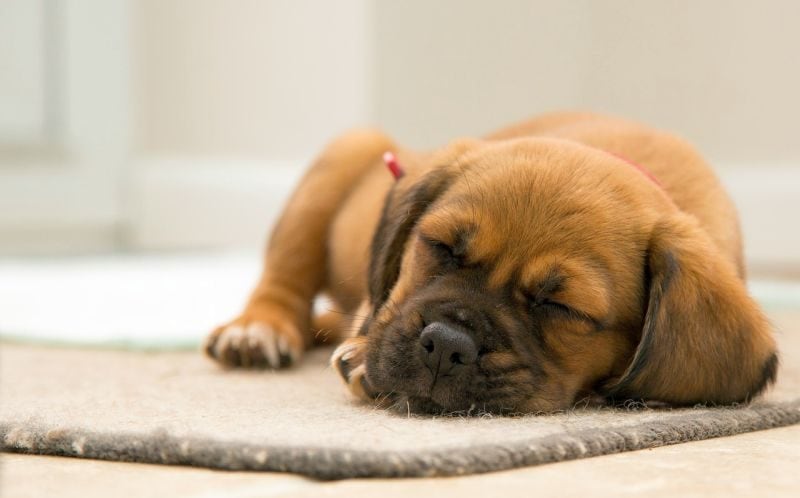
Mat-Training Can Promote Independence
Do you have a pup that is constantly under your feet? Mat training is a great tool for teaching pups that they can be independent and self-sufficient.
As you begin to add in the three D’s, you can then begin to distance yourself from your pup more and more in a very systematic way.
This helps your dog relax and promotes calmness even when she is distanced from you or other family members — and it does so in a positive and constructive way, which can help her to feel more secure and empowered.
This can be especially useful for pups that experience isolation distress or separation anxiety.
Mat-Training Can Help Your Pup Remain Calm in Public
Something to aspire to may be to have your pup lie calmly at your feet on her mat while you’re having a drink on the patio or sitting at a cafe.
If she is familiar and comfortable with the mat and you have successfully practiced your distance, distraction, and duration, then she may be ready to try this behavior in public spaces.
Just be sure to do so in a safe place, and keep her leashed during the process.
Mat-Training Strengthens Your Bond
Any foundation skills you work will not only promote good manners, but will improve the communication between both you and your dog.
It will also provide your pooch with the mental stimulation that dogs need to prevent boredom and allow her to enjoy a richer environment.
Going Beyond the Mat
Mat training is a great skill for any dog! And teaching her to go to her mat is a gateway for lots of other targeting (getting your dog to paw or nose an object) and stationing behaviors (getting your dog to go to and stay on various places and objects).
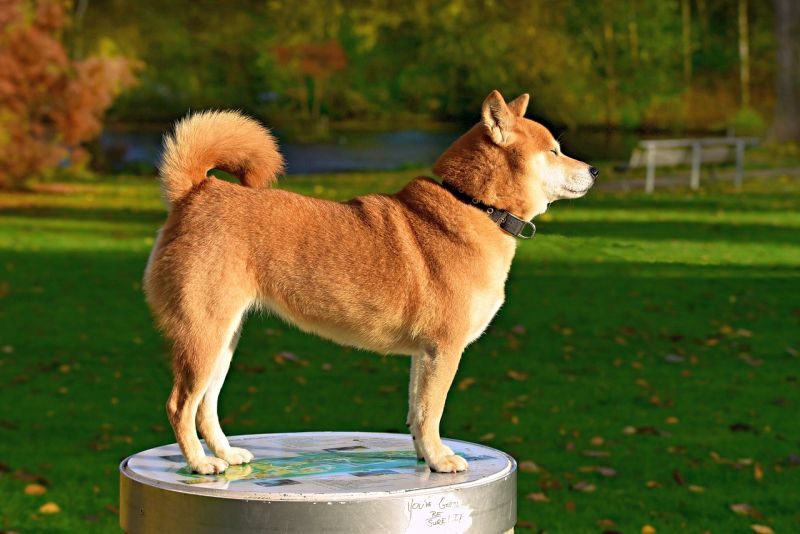
Advanced Place as a Party Trick
Teaching you four-footer to place herself on top of a park bench, target a doorbell to signal the need to go outside, or to wipe muddy paws for a grooming session can be incredibly handy.
You can also make “Place” into a fun party trick!
For example, “Four Paws on a Box” (also known as “The Elephant Trick”) is always entertaining.
Teaching your dog “Four Paws on the Box” is very similar to teaching your dog “Place,” but the place you want her to go is raised above the ground — some dogs even become masters at leaping up onto a picnic table!
This can also be a bit trickier than the place behavior because you might be dealing with a smaller standing surface when using something like a box. This can be more challenging for most dogs!
Check out this video demonstrating “The Elephant Trick”:
With a lure between your thumb and forefinger, put the treat in front of her nose and move your hand above the box.
If she walks onto the box with four paws, great! Mark the behavior and reward her. If she is only comfortable with placing two paws on the box at the outset, you can go ahead and reward just two feet at this point — even if she puts her paws up there for just a few seconds.
When she is really good with two feet, start trying to get her to put all four feet on the box.
Once your dog understands what is expected of her (standing on the box), you can begin to add in your cue word (see steps above for teaching “place”). Then move on to the three D’s.
You may want to take the trick even further by teaching her to spin (you can use the lure to spin her in a circle) or to stand on her back legs.
Keep in mind, due to the way some dogs are built, standing on hind legs might not be easy or safe (don’t, for example, teach dachshunds or other long-bodied breeds to stand on two legs, as it may injure their spine).
Training your dog to learn new tricks is both mentally stimulating and will improve your communication and bond.
Target Training
Target training (teaching your dog to touch her paw to a specific object) is another fun skill you can train your dog to do. You can teach your dog to target an object using her paw in the same basic way that you taught her to go to her mat.
However, in this exercise, she will just use a paw on a specific target item, like so:
Teaching your dog to target with her paw can be a fun tool for pressing buttons, ringing doorbells, closing the door, or a ton of other fun tricks.
Target training also provides practical value.
If, for example, your dog isn’t a fan of nail trims, you can actually teach her to file her own nails by using a file board and targeting.
This can really take the stress out of nail care and empower your pooch by providing her with viable options and the ability to cooperate in her own care.
Teaching Your Dog to Go to Bed
As mentioned above, you shouldn’t use “Place” interchangeably with “Bed.”
“Go to bed” is not something I normally teach my dog because I assume she will pick and choose when she wants to lay on her bed without my direction.
But it certainly doesn’t mean that you can’t teach a dog to go to their bed.
Just decide what you want it to look like. Do you expect her to go to her dog bed and stay there until she is released? If so, follow the steps above. Do you want to just use it as a signal that it’s time for bed?
My pup loves bedtime and as soon as I say those three sweet words, “Time for bed,” she is under my covers (yes, that’s where she sleeps) before I can even finish my sentence. I have not, however, given her any expectations of having to stay there. She is free to move about as she pleases.
Still, some dog owners find it handy to teach their dogs a “Go to your bed” command, so if it’s something that would prove useful for you, you can apply similar training steps as used for place training.
***
Teaching a dog to “Place” is one of my top five go-to skills to teach any and every dog. It is an excellent tool for preventing unwanted behaviors, teaching more desirable alternatives, and helping our dogs to relax.
Have you ever tried to teach your dog the place command? What skills are in your “top-five” list that has helped your dog be the best dog she can be? Let us know in the comments below!
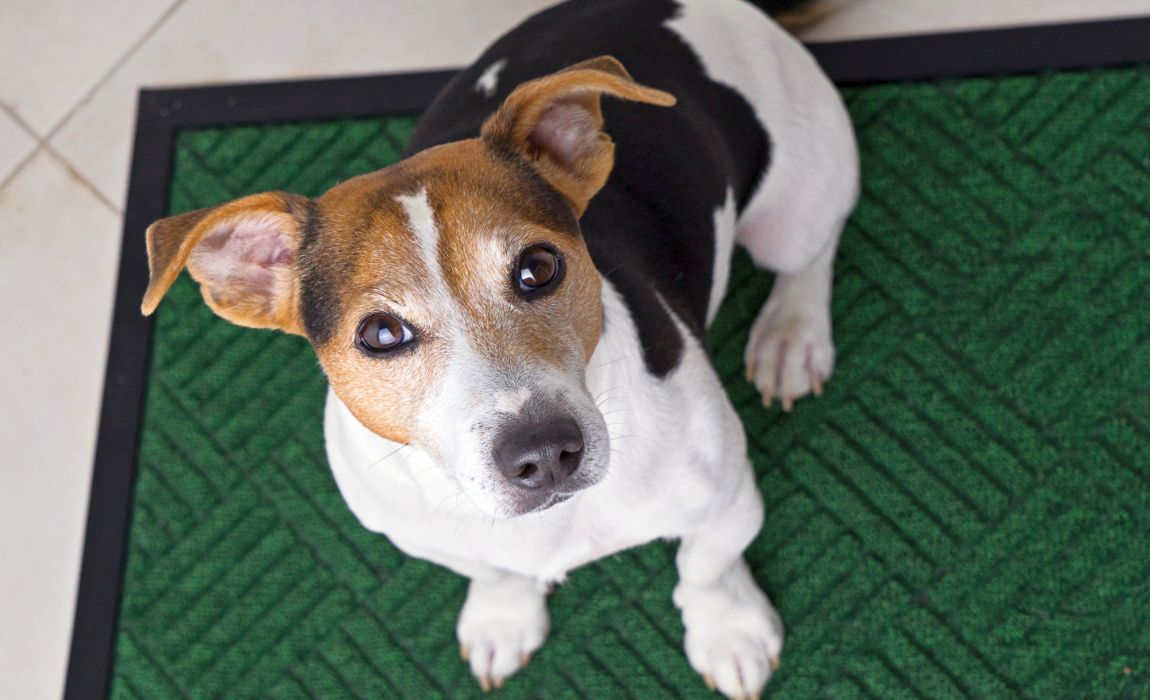

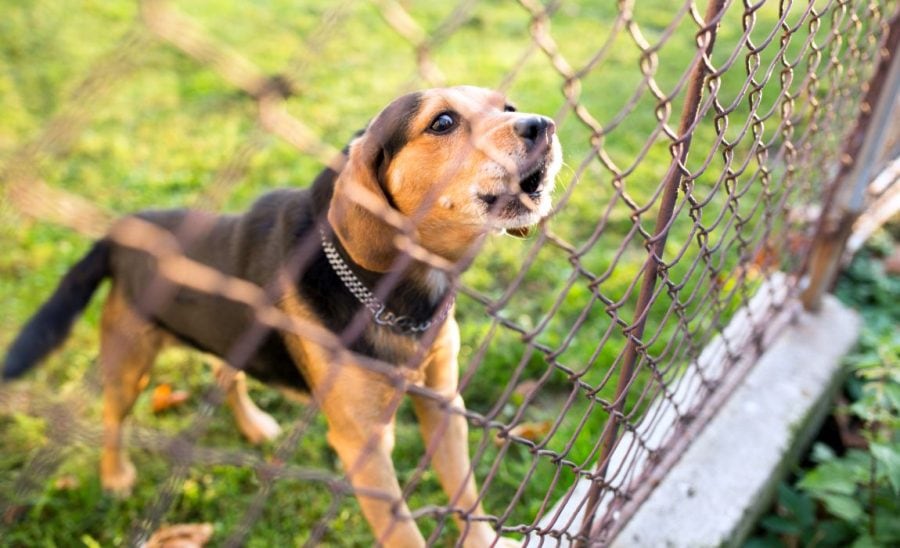


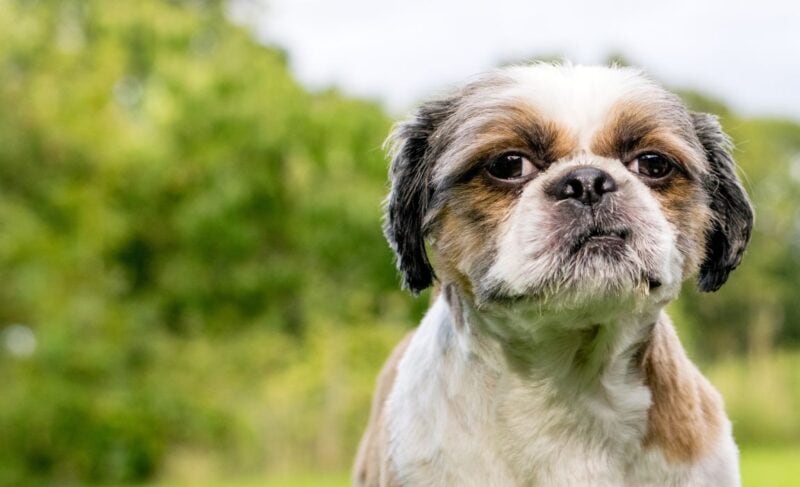
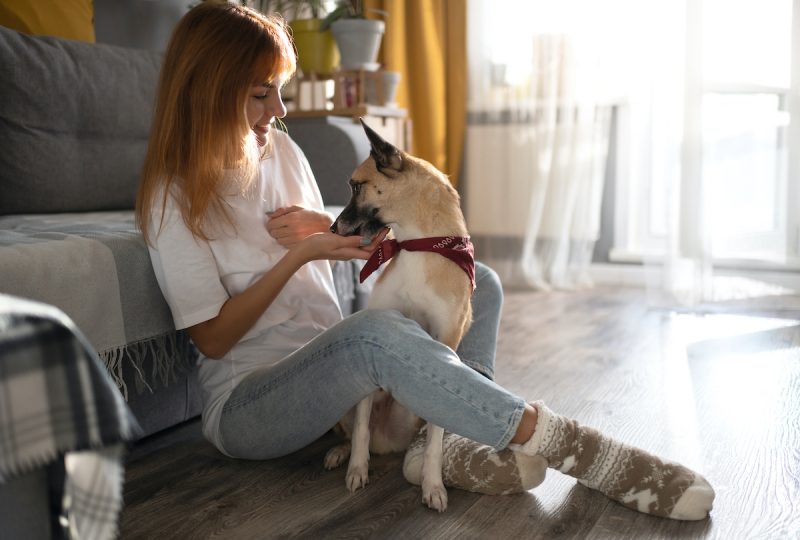
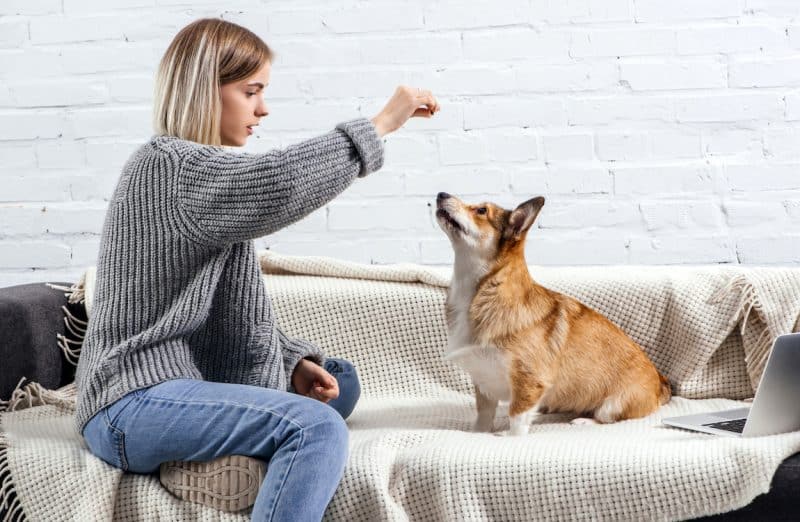
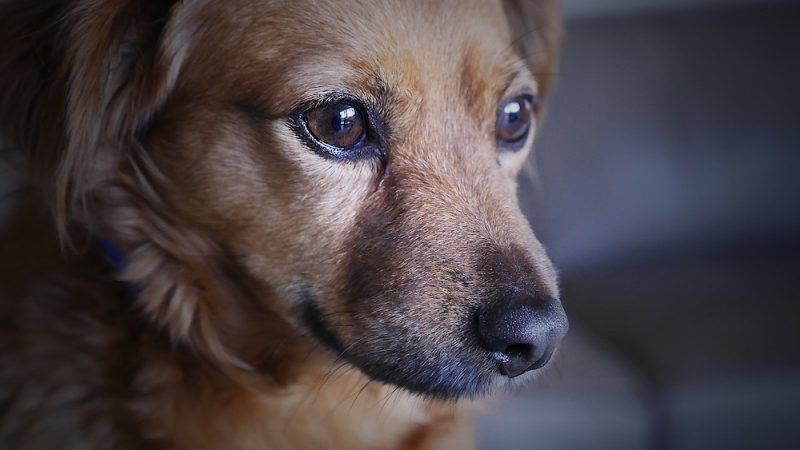
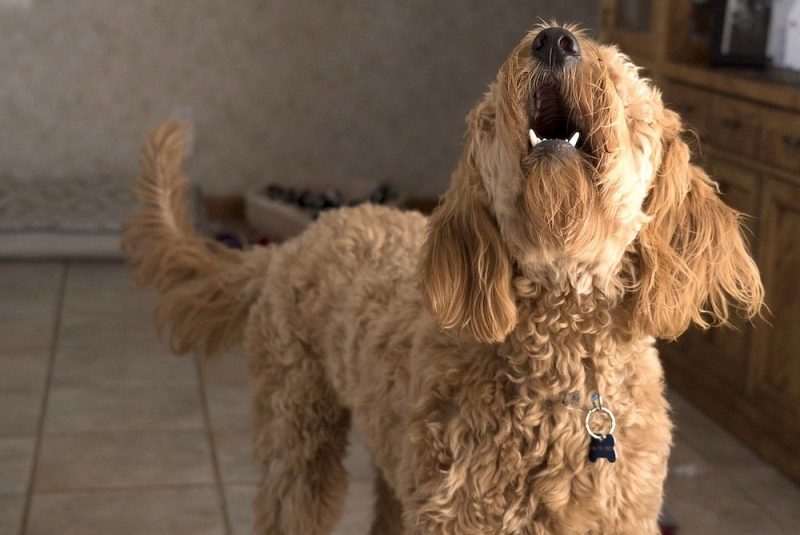
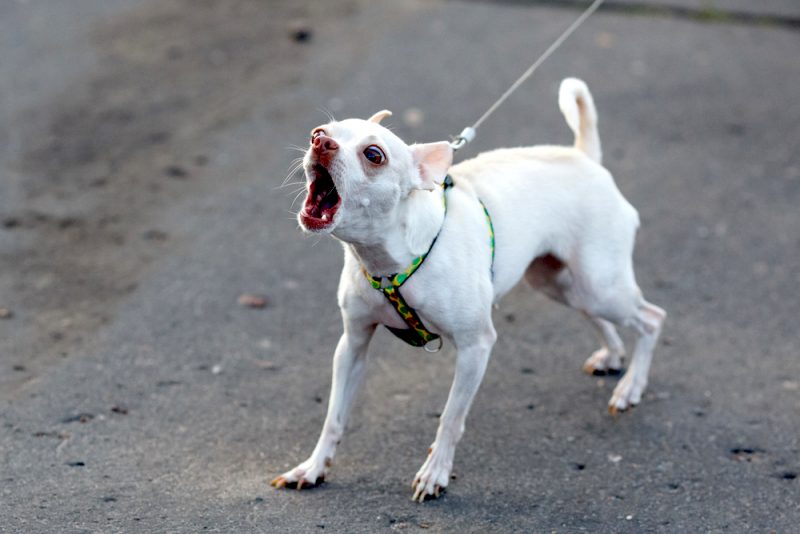


Leave a Comment